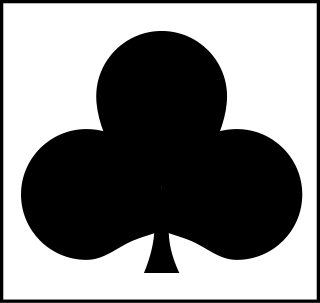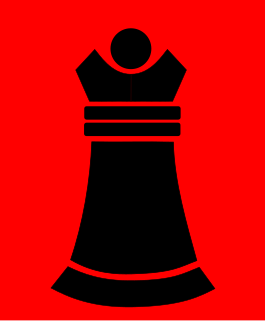
The King's African Rifles (KAR) was a multi-battalion British colonial regiment raised from Britain's various possessions in East Africa from 1902 until independence in the 1960s. It performed both military and internal security functions within the colonial territories, and served outside these territories during the World Wars. The rank and file (askaris) were drawn from native inhabitants, while most of the officers were seconded from the British Army. When the KAR was first raised there were some Sudanese officers in the battalions raised in Uganda, and native officers were commissioned towards the end of British colonial rule.

The 1st (African) Division was a British Empire colonial unit during the Second World War. The division was formed on 24 July 1940 in East Africa. On 24 November of that year, the division was re-designated as the British Army's 11th (African) Division. The division were composed primarily of West African and East African troops. It was disbanded on 23 November 1941 and its component units reassigned.

The 6th Armoured Division was an armoured division of the British Army, created in September 1940 during the Second World War and re-formed in May 1951 in the UK.

The 36th Infantry Brigade was an infantry brigade formation of British Army that fought in the First World War, as part of 12th (Eastern) Division, on the Western Front. The brigade also fought in the Second World War, with the 12th (Eastern) Infantry Division, in France, and later with 78th Infantry Division in Tunisia and Italy.

The 29th Infantry Brigade was an infantry brigade unit of the British Army. It was originally raised in 1914 and saw service during the First and Second World Wars and the Korean War.

The 210th Independent Infantry Brigade (Home) was an infantry brigade formation of the British Army organised during the Second World War to command a group of newly raised Home Defence battalions. It was later converted to a frontline brigade that served with distinction in the later years of the war, the 38th (Irish) Infantry Brigade.
The 234th Infantry Brigade was an infantry brigade of the British Army, raised during the First World War, and was later reformed during the Second World War.

The 2nd (African) Division was a British Empire colonial unit that fought during the Second World War. On 19 July 1940, the 2nd (African) Division was formed in Kenya, British East Africa. On 24 November of that year, the division was redesignated as the British Army's 12th (African) Division. The 12th (African) Division was also known as the 12th Division when in October 1941 its West African brigade from the Gold Coast was reassigned and replaced with a third East African brigade. The division was disbanded in East Africa on 18 April 1943.

The 146th Infantry Brigade was an infantry brigade formation of the British Army, part of the Territorial Force with the 49th Infantry Division. The brigade saw active service during both the First and the Second World Wars, and during the early part of the Cold War. The brigade was active from 1908 until 1967 when it was finally disbanded. The brigade was reformed in 1983, though with a much smaller and insignificant role before finally disbanding again in 1993.
The 10th Indian Infantry Brigade was an infantry brigade formation of the Indian Army during World War II. It was formed in September 1939. In June 1940 it was assigned to the 5th Indian Infantry Division and in September 1940, sailed for East Africa. The brigade spent time attached to other formations, the 4th Indian Infantry Division between June 1940 and March 1941, and the British 10th Armoured Division between March and June 1942, where it was destroyed during the Battle of Gazala. A new brigade was formed in Egypt and assigned to the 10th Indian Infantry Division, with which it fought in the Italian Campaign from April 1944 until the end of the war.
203rd Infantry Brigade was a Home Defence formation of the British Army during the Second World War.

206th Independent Infantry Brigade was a Home Defence formation of the British Army during the Second World War.
The 207th Independent Infantry Brigade was a Home Defence formation of the British Army during the Second World War.
The 209th Infantry Brigade was a Home Defence formation of the British Army during the Second World War.
The 211th Infantry Brigade was a Home Defence formation of the British Army during the Second World War.
The 144th Infantry Brigade was an infantry brigade of the British Army that saw active service in the First World War and again in the early stages of the Second World War before being reduced to a reserve brigade and remained in the United Kingdom for the rest of the war. In both world wars the brigade served with 48th Division.
The 21st Infantry Brigade was a brigade sized formation of the British Army, which was founded on 31 August 1939 in British East Africa. The brigade was initially called the 1st Infantry Brigade, but was redesignated on 18 October 1940 as the 21st Infantry Brigade. The brigade was composed of units from the King's African Rifles and the Northern Rhodesia Regiment.
The 22nd Infantry Brigade was a brigade sized formation of the British Army, which was founded on 19 September 1939 in British East Africa. The brigade was initially called the 2nd Infantry Brigade, but was redesignated on 18 October 1940 as the 22nd Infantry Brigade. The brigade was composed of units from the King's African Rifles, the Northern Rhodesia Regiment and the Rhodesian African Rifles.
The 27th Infantry Brigade was a brigade sized formation of the British Army, which was founded on 18 September 1940 in Northern Rhodesia. The brigade was initially called the 7th Infantry Brigade, but was redesignated on 3 October 1940 as the 27th Infantry Brigade. In April 1945, the brigade was redesignated to the 27th Infantry Brigade.








